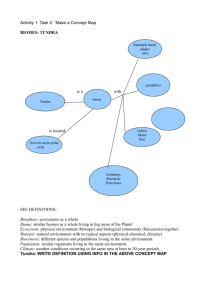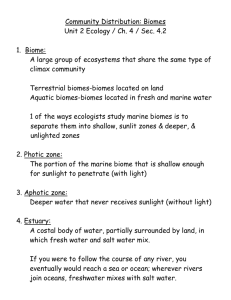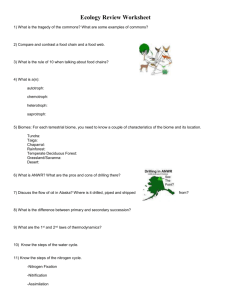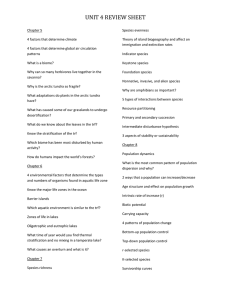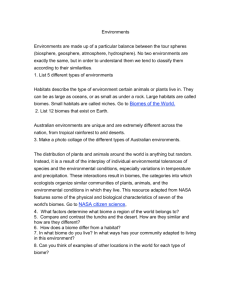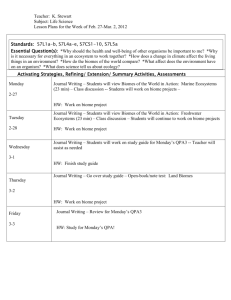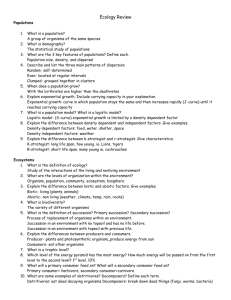Biome Guided Notes
advertisement
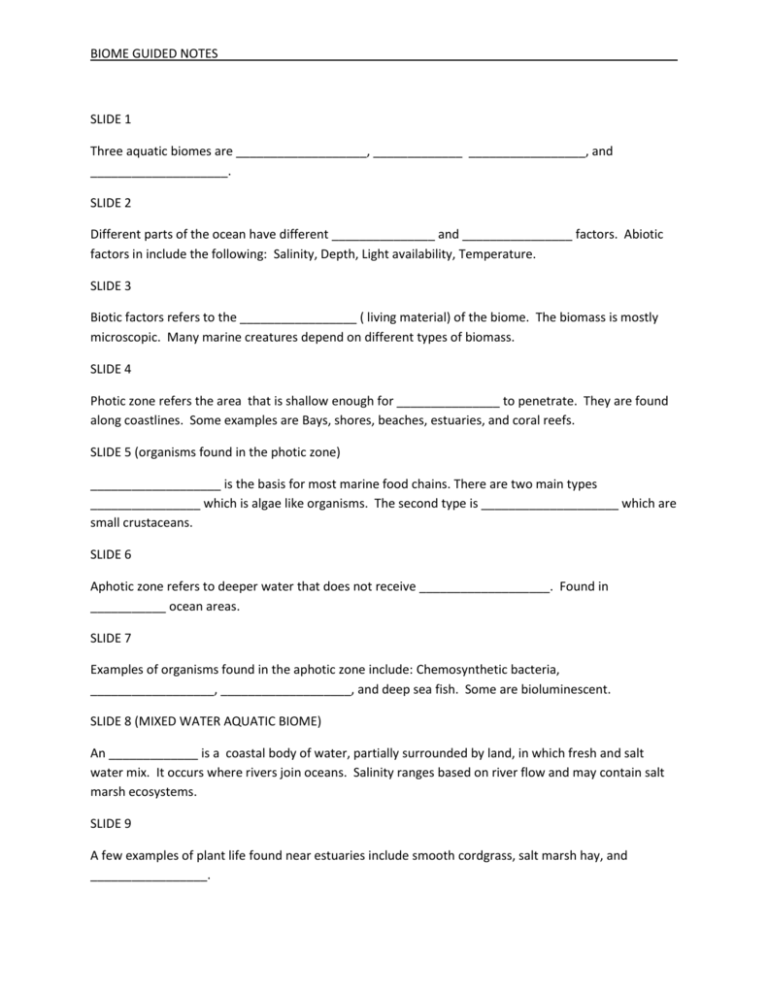
BIOME GUIDED NOTES SLIDE 1 Three aquatic biomes are ___________________, _____________ _________________, and ____________________. SLIDE 2 Different parts of the ocean have different _______________ and ________________ factors. Abiotic factors in include the following: Salinity, Depth, Light availability, Temperature. SLIDE 3 Biotic factors refers to the _________________ ( living material) of the biome. The biomass is mostly microscopic. Many marine creatures depend on different types of biomass. SLIDE 4 Photic zone refers the area that is shallow enough for _______________ to penetrate. They are found along coastlines. Some examples are Bays, shores, beaches, estuaries, and coral reefs. SLIDE 5 (organisms found in the photic zone) ___________________ is the basis for most marine food chains. There are two main types ________________ which is algae like organisms. The second type is ____________________ which are small crustaceans. SLIDE 6 Aphotic zone refers to deeper water that does not receive ___________________. Found in ___________ ocean areas. SLIDE 7 Examples of organisms found in the aphotic zone include: Chemosynthetic bacteria, __________________, ___________________, and deep sea fish. Some are bioluminescent. SLIDE 8 (MIXED WATER AQUATIC BIOME) An _____________ is a coastal body of water, partially surrounded by land, in which fresh and salt water mix. It occurs where rivers join oceans. Salinity ranges based on river flow and may contain salt marsh ecosystems. SLIDE 9 A few examples of plant life found near estuaries include smooth cordgrass, salt marsh hay, and _________________. BIOME GUIDED NOTES SLIDE 10 A Few examples of animal life found near estuaries include developing snails, crabs, and ____________. ________________ provide a habitat for young organisms to develop. As they reach adulthood, they move out into the ocean. SLIDE 11 Freshwater biomes includes ______________, _________________, and rivers, etc. Some ______________ factors include fish, frogs, bacteria, aquatic plants, algae. Examples of ______________ factors include light and temperaturevariations. There is more light at top, less light at bottom and is colder at bottom, warmer at top. SLIDE 12 Terrestrial biomes include __________________, ____________________, ________________, ______________________, ___________________, _________________. SLIDE 13 Earth’s curvature causes the sun’s rays to strike the equator more ______________ than the poles. As you move from the equator to the poles, or vice versa, the _______________ changes. SLIDE 14 As ________________ changes the climate changes. Latitude and climate are ______________ factors that affect plant and animal life. SLIDE 15 ( TUNDRA) Closest to north and south poles and is _________________. The tundra experiences _____________ summer days and very _____________ winter days. SLIDE 16 Temperature does not rise above freezing for long and only very top layer of soil thaws in summer. Underneath the top layer is ________________. SLIDE 17 Plants that are found in the tundra include shallow-rooted grasses, ____________ _____________. The lack of nutrients in the soil and the cold temperatures _____________ plant growth. BIOME GUIDED NOTES SLIDE 18 Animals that are found in the _____________ include large animals, caribou, reindeer, small mammals, Lemmings, Weasels, Arctic foxes, Snowshoe hares. SLIDE 19 More examples of animals found on the tundra are snowy owls, hawks, mosquitoes, and blackflies. SLIDE 20 (TIAGA) Tiaga is located south of _____________, and is also called boreal or coniferous forest. It is usually _____________ and wetter than tundra and experience ________________, severe ___________________ and short ____________ summers. The topsoil is acidic and mineral poor but contain many coniferous trees. SLIDE 21
